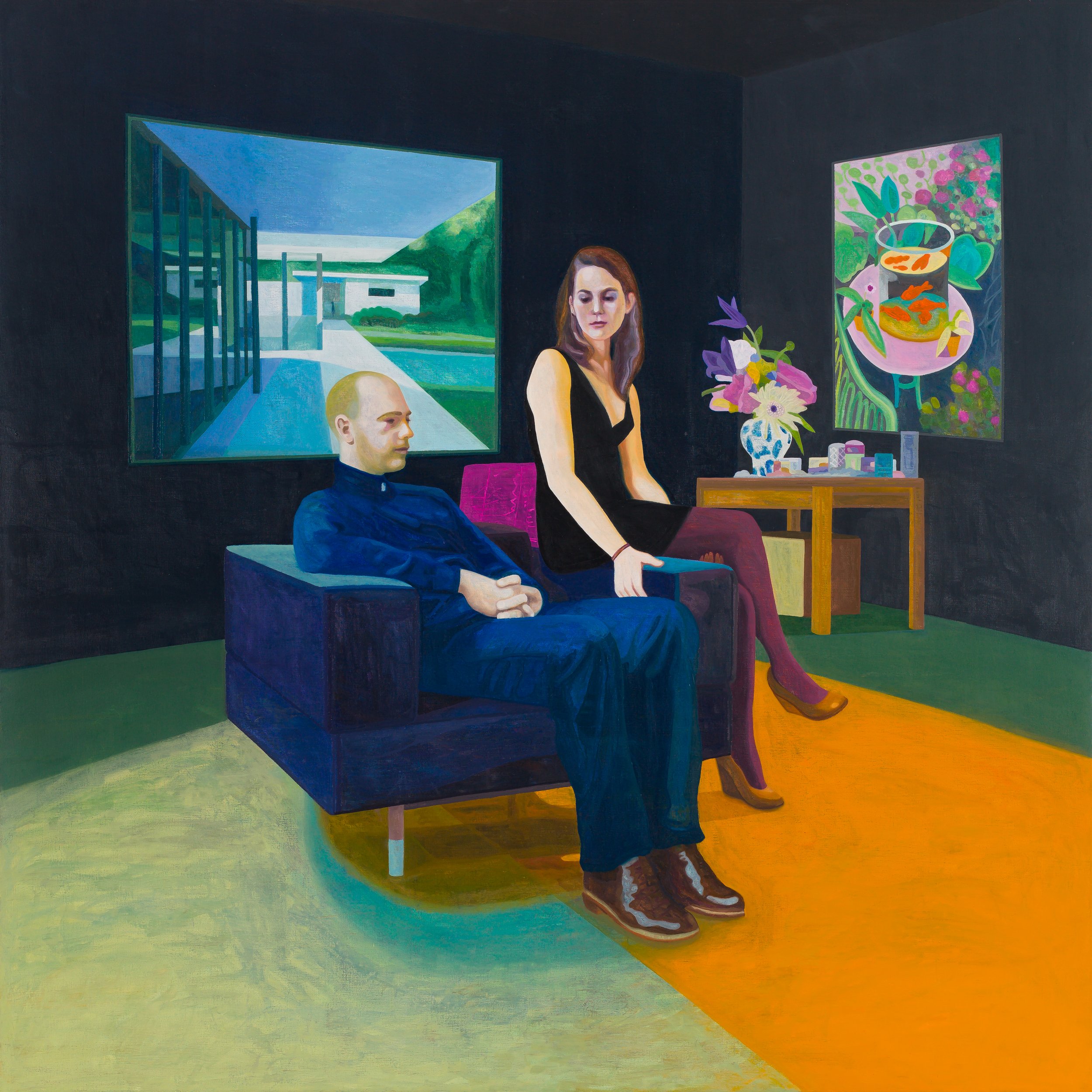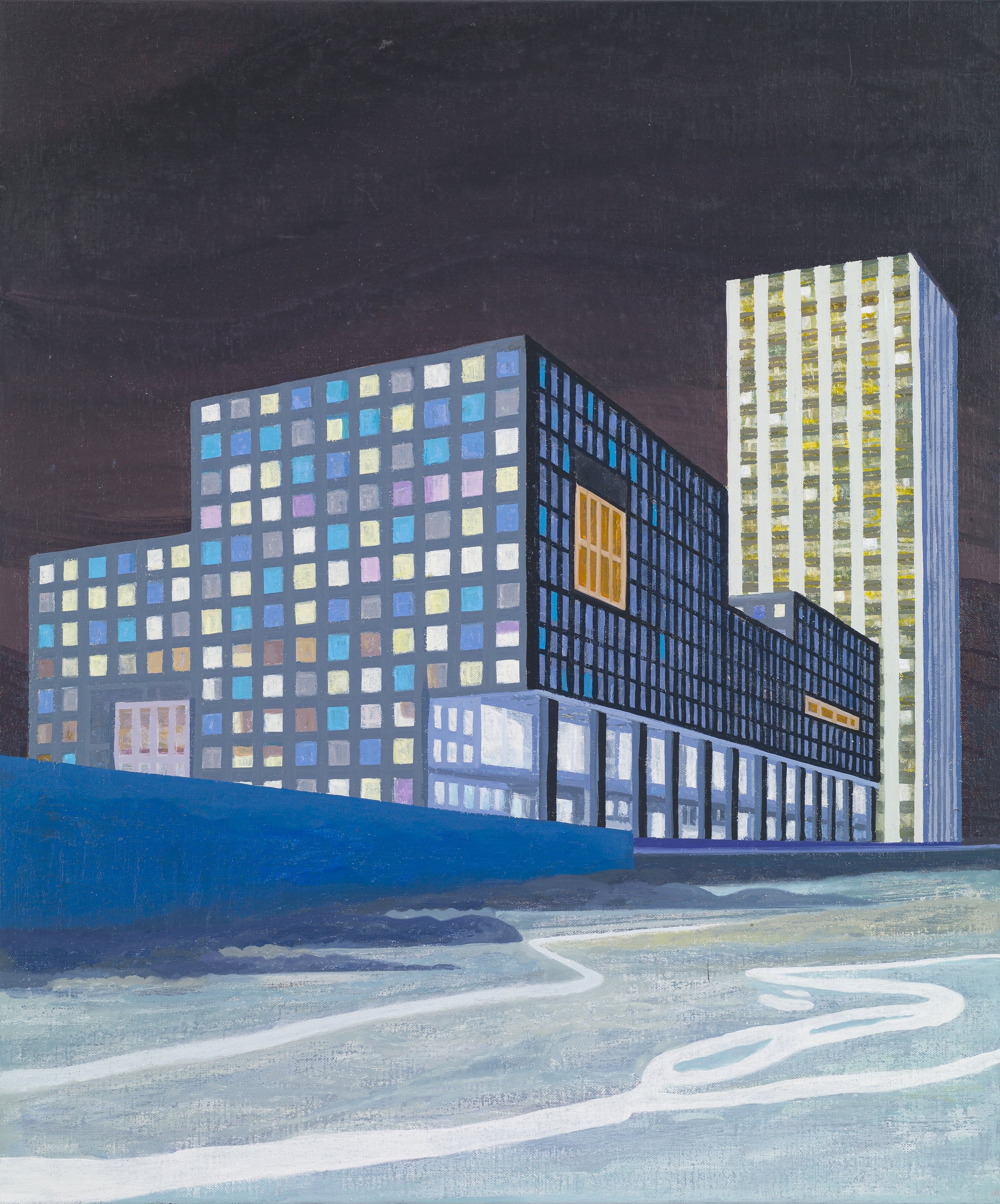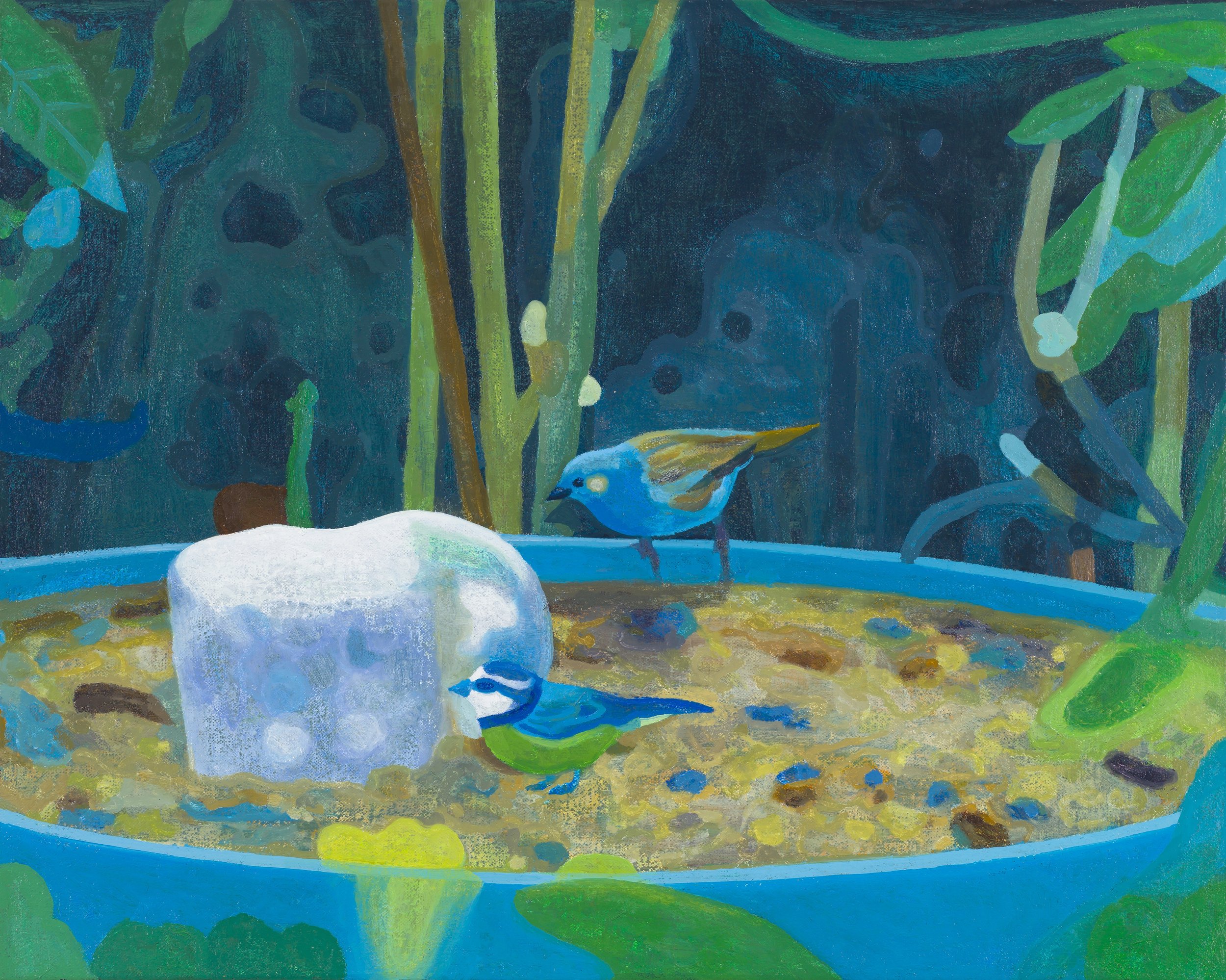AN INVITATION TO ETERNITY
Hans Vandekerckhove
15/10/2022 - 21/01/2023




HANS VANDEKERCKHOVE
Hans Vandekerckhove (°1957) is a Belgian painter born in Ingelmunster in West Flanders. He is the second of five children. His father was an architecture enthusiast, a great fan of Piet Mondrian and an excellent portrait painter. His mother was also an art lover. At a very young age Hans was taken on excursions to museums and began to draw a lot himself. He lived in a stimulating and happy environment. His uncle, a passionate gardener and naturalist, inspired a fascination for greenhouses and walled gardens. In 1979 he graduated in art history from Ghent University. He never even considered a career in a field unrelated to art. Painting was to be his life, it has become a visceral need. In the early 1980s he met his future wife Christina, moved to Brussels and started working as an artist while developing the Sint-Lukas Gallery, launched by architect Alfons Hoppenbrouwers. Three years later he quit this job to devote himself fully to his art. He quickly got recognition both in Belgium and internationally.
Since the mid-1980s he has lived and worked in Ghent, but he regularly travels throughout Europe, which is an important source of inspiration, be it to discover contemporary artists at the Zeitgeist exhibition in Berlin or the work of Giotto in Assisi, or to immerse himself in nature during hikes in the Alps or in Scotland. Self-taught, with sixty years of experience in drawing, engraving and, above all, painting, he produces a body of work that evolves with the strength of slowness and coherence.
I was indeed struck by the impression of total consistency that emerges between the man and his work, by the harmony that reigns between what he says, does and is. He paints what he lives and lives what he paints. Fantasy goes hand in hand with serenity, travels and hikes nourish moments of reflection, nature enters the house and vice versa. He is always true to himself: the question of whether to dissociate the artist from the work is redundant here. Everything is perfectly coherent and remarkably intense.
HIS WORK
Hans Vandekerckhove's work mainly consists of figurative oil paintings. At the end of his studies in the 1970s, conceptual art was very much in vogue. But during a trip to London he discovered David Hockney and decided to write his thesis on this very contemporary but figurative artist. He was fascinated by the artist and by the man, always positive and optimistic about life. In Hans Vandekerckhove's work we discover this influence of Hockney but also his interest in Matisse, Gauguin, Bonnard and Balthus.
His subjects may be landscapes, portraits or interior scenes, but are always directly inspired by his personal experiences: his daily life, his travels, the specific interests he has developed over the years. He only paints people he knows personally, usually close relatives. He also often portrays himself, and makes many double portraits. Certain recurrent themes are landscapes with trees, greenhouses, gardens, modernist architecture; but also reading, as a source of escape and pleasure or of learning and personal enrichment. There are also all sorts of dualities: the interiors feature windows with views of the exterior, the landscapes often include a path, a real or fictitious bridge that links the near to the far, brightness emerges in the night. The scene is realistic, but has been transformed into something magical, enchanted by the prism of the brushstroke and the colour. Magic, vivid colours, play of light, immense poetry, silence and great gentleness , these might sum up what we see.
Indeed, Hans Vandekerchove wants to show an imaginary, reinvented and fantasised world, which aims above all to offer an escape from the banality of everyday life and to arouse wonder. One could stop at the first impression, a very pleasant one at that, of a revisited world in which all the beauty is being highlighted. Showing the beautiful is a leitmotiv. But if you let yourself be absorbed a little longer you will discover that Hans Vandekerckhove's works can be compared to philosophical tales. There is always an abstraction, an idea hidden in the motif. One of the most obvious to me is perhaps Cicero's thought: "If you have a library and a garden, you have everything you need". Beyond Vandekerckhove's obvious interest in both gardens and books, this is all about the necessary balance between moments of action and experimentation on the one hand and moments of reflection and brainwork on the other. This is a round trip that Hans Vandekerckhove makes himself. Another almost permanent preoccupation in Vandekerckhove's work is the question of the interaction between man and his environment, both natural and man-made.
From a technical point of view, he has always been interested in the Flemish primitives and their oil painting technique, its alchemy, the tactile and olfactory effects. Interested in the glazing technique, which he reproduces in his own way, he works in successive transparent layers giving a characteristic depth to the material. He works in all types of formats, in very elaborate compositions in which geometry is very present. He is a slow painter who may return to the same work several times over a period of several months.
AN INVITATION TO ETERNITY
For this exhibition Hans Vandekerckhove relies on two distinct sources of inspiration that complement each other and give the presentation a great deal of cohesion.
On the one hand, it draws its philosophical meaning from the enigmatic title of a work by Gauguin D’où venons-nous, qui sommes-nous, où allons-nous ? (Where do we come from, who are we, where are we going?) This questioning, recurrently underlying the themes of Hans Vandekerckhove's works, constitutes a delicate and subtle invitation to reflect on the relationship to oneself, on all the interactions that shape us: the past, our culture, nature, heritage. The common thread linking the works selected by the artist is the intimate, reflection, memory, the links that connect us to the environment and to others.
On the other hand, Hans Vandekerckhove is inspired by the work of Jan van Eyck he has always felt a fascination for, not only for the technical virtuosity of course, but also for the attention to detail and the multitude of symbols, references and hidden allusions that can be found in the painted scenes. Van Eyck hides a whole other world within his works, little parallel stories in the details that can only be perceived through careful reading. Happy are those who discover and marvel at them! The Arnolfini Portrait is a perfect example of this practice. This work happens to have inspired the future Vandekerckhove couple for their wedding invitation (see illustration on p.XXX). More recently, Hans Vandekerckhove discovered in the Turin Museum a small painting by Van Eyck that once belonged to Anselm Adornes Saint Francis of Assisi Receiving the Stigmata, a second, smaller version of which was also owned by Anselm Adornes and is now in the Philadelphia Museum of Art. With an interval of almost six hundred years, Hans Vandekerckhove thus shares with Anselm Adornes the same admiration for Jan van Eyck, whom he revives in his own way in this Domain.
In An Invitation to Eternity, Hans Vandekerckhove intertwines his two sources of inspiration: he reinterprets details of Van Eyck's paintings, taking Gauguin's questioning as his guiding principle. In this way he shares with the visitor memories of his youth ("Where do we come from?"), self-portraits ("Who are we?") or double portraits with his children ("Where are we going?"). Reading and our various interactions with the world, themes also present in the works presented, provide elements of an answer. He mirrors his personal experience of these existential questions with the history of the place. The Adornes Estate, a place steeped in history, also faces the challenge of maintaining a present and future identity and always staying connected to the changing world. The two stories echo each other in a subtle and aesthetic dialogue.
Hans Vandekerckhove suggests here that we dream and reinvent the world through a heightened and benevolent attention to detail: houses, lovers, precious objects full of history and magic, anecdotes, nature. In doing so he invites us to use our imagination and creativity to live in the here and now, that is, in eternity. Indeed, "Eternity," says André Comte-Sponville, "is the present because it is the only moment that really exists, since the past no longer exists and the future does not exist .” Like many of us, Hans Vandekerckhove takes note of the fragility of the earth, which can no longer be considered an inexhaustible and infinite source of life. What have we done? What should we do? What can we do? More than ever our relationship with time is disturbed. How much time? No one knows, but literally and figuratively our eternity is in the present.
